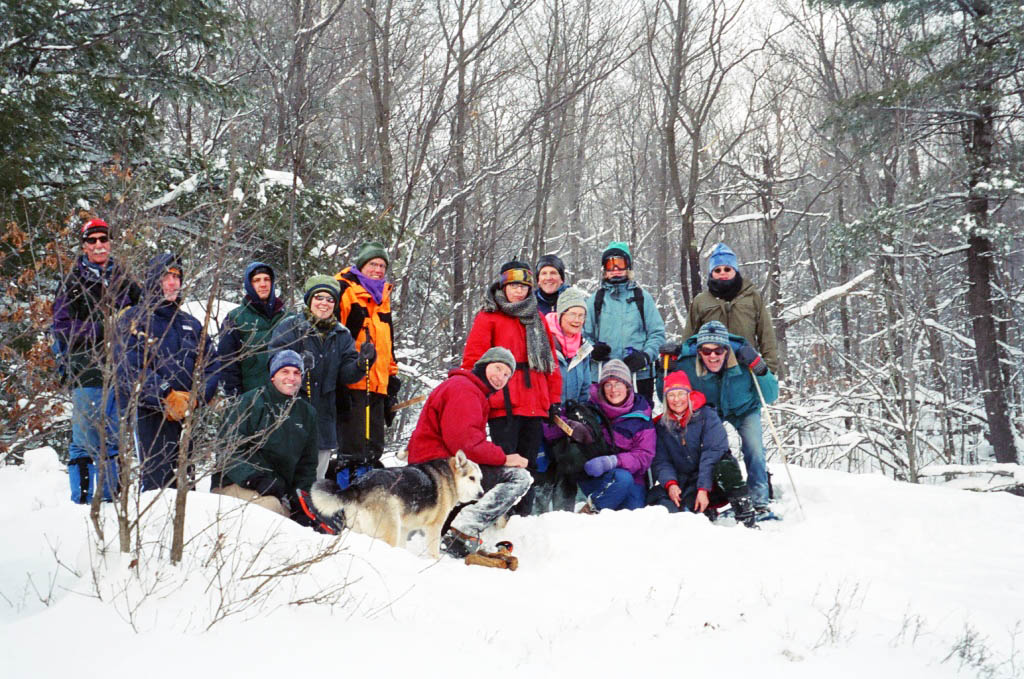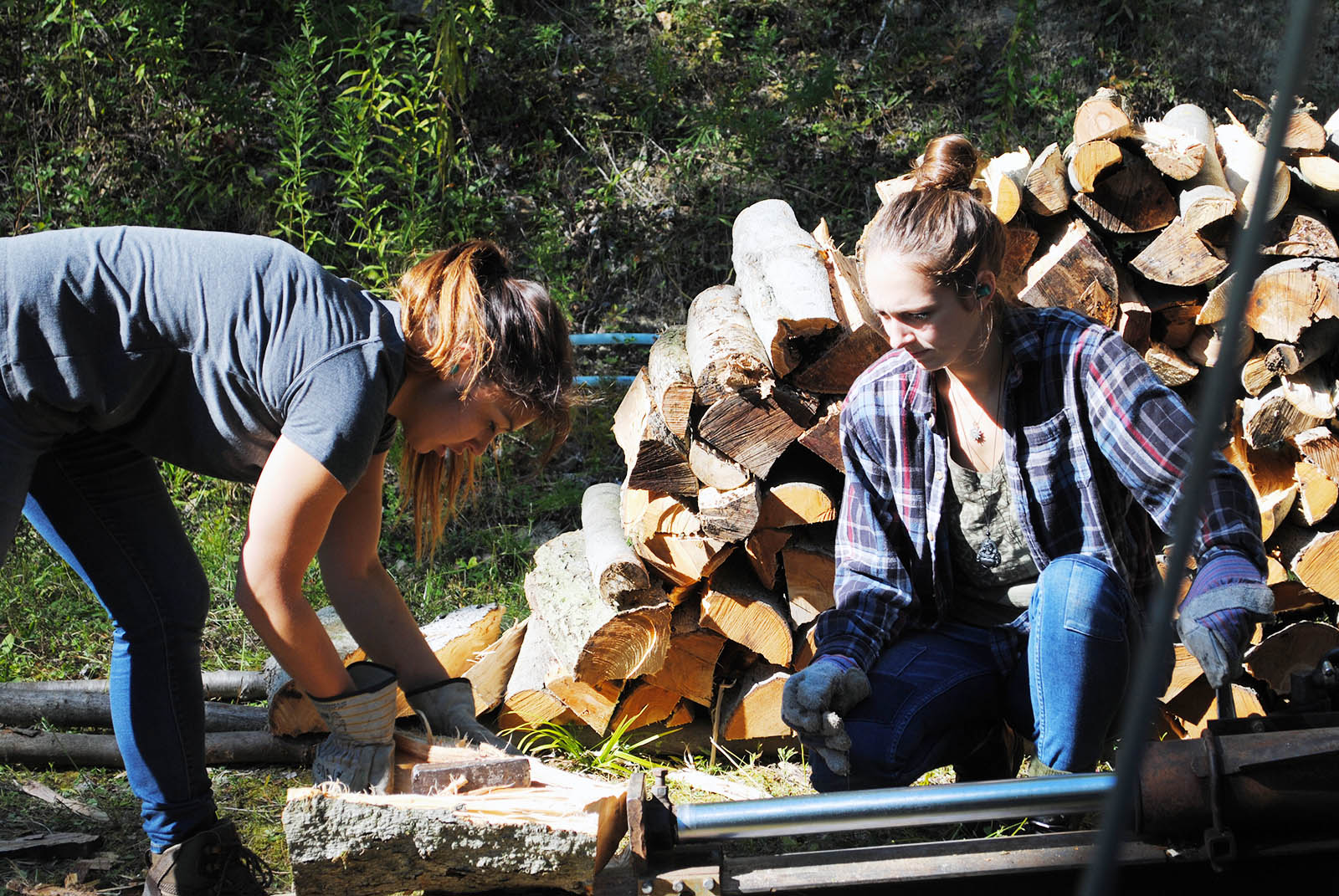Applied Forest Ecosystem Conservation
What does wholistic forest conservation look like? At Vermont Family Forests, we explore, test, and apply the practices of forest-centered conservation through hands-on workshops, through our work on our own lands, and through the work we do with forest landowners, woodsworkers, and the community at large. In particular, we apply our forest conservation practices in collaboration with two sister organizations–Little Hogback Community Forest and The Watershed Center, which you can read about below.
Little Hogback Community Forest
When VFF board member Deb Brighton developed the idea for the Little Hogback Community Forest back in 2007, she was motivated by compelling ecological, economic, and social issues surrounding forest ownership in Vermont. Forest ownership was no longer an economically sensible investment. Rising property values had essentially made owning a forest a luxury, affordable only to wealthier households, and out of the reach of many of the community members who have traditionally hunted, hiked, and harvested there.
Deb’s research revealed sobering statistics:
- 75% of forest land in Vermont is owned by private, non-commercial landowners, and 25% of that land is owned by people living outside the state.
- Vermont’s forests are becoming increasingly fragmented. Between 2003 and 2007 alone, 4,000 new parcels smaller than 25 acres were sub-divided from larger parcels.
- In 2007, the average market value of an acre of working forest in a parcel larger than 25 acres was $1,743/acre. Yet its value, based on its income-producing potential as determined by Vermont’s Current Use program, was $133.

In response, Vermont Family Forests, in collaboration with the Vermont Land Trust, created the Little Hogback Community Forest LLC to make forestland ownership affordable and accessible for local residents, many of whom could not, individually, afford forestland.
The Little Hogback Community Forest began as a vision of equitable access to forestland ownership. VFF held public meetings and community hikes on the land, like this one in 2005, to explore interest in the project.
The Little Hogback Community Forest is a 115-acre parcel of forestland in Monkton jointly owned by 16 shareholders. Each shareholder purchases the right to enjoy and profit from carefully conserved forestland on which subdivision, development, and over-cutting are off limits.
The Vermont Land Trust holds a conservation easement on the parcel, which ensures that the land will be carefully managed and that it will never be subdivided or developed. This restriction on development has the added benefit of lowering the price of the land.
Vermont Family Forests holds a covenant that limits the value of each share to one that an investor could pay with the expectation of a modest rate of return from the land under careful management. By lowering the initial price of the land, this covenant makes the parcel perpetually affordable to community members who need a return on their investment.
The remaining rights—including rights to carry out conservation practices, harvest firewood and timber, tap maples and produce maple sugar, hike, camp, and so on—are held by a Limited Liability Company comprised of 16 people who live in Addison County. Half of the shares are reserved for community members whose incomes are less than the county median.
For several years, students from the University of Vermont have visited Little Hogback Community Forest and worked with LHCF members to split firewood for the local wood bank.

Each member owns a share in the LLC and receives returns from the various products of the forest. Members can use their share of those products themselves or they can receive a return from the sale of the products.
Because of meticulous management geared toward the long term, the land should become more valuable as the forest grows older. LHCF members can expect to receive about the same return on their investment that they would get if the money were in the bank. Additionally, they can work on and enjoy their land, with the satisfaction of knowing their piece of the Earth is well cared for.
Little Hogback Community Forest is managed according to the forest conservation principles of Vermont Family Forests (VFF), under the direction of a VFF conservation forester. This not only protects forest health, it also allows the LLC to be an active partner in VFF collaborative marketing opportunities.
The Watershed Center
Vermont Family Forests has had a close partnership with The Watershed Center (TWC) since 1995, when both organizations were created. Now totaling just over 1000 acres, the lands of The Watershed Center, in the northeast corner of Bristol, are a core community-held forested area where Vermont Family Forests applies the principles of organic forest conservation.
Conserving a Community Forest
In 1997, the City of Vergennes put a 666-acre property in Bristol up for sale because the city no longer needed the property for its a water supply. A handful of local community members, including VFF founder David Brynn, quickly organized to see if they could raise funds to conserve this gem of land. With the exception of two acres in New Haven, the parcel lies in the northwest corner of Bristol, bordering the towns of Monkton and New Haven. This land, known as The Waterworks, contained a phenomenal variety of habitats, including a 14.5-acre reservoir, extensive wetlands and many forested natural community types.
After a Herculean fundraising effort, the group purchased the land and placed it under a conservation easement held jointly by the Vermont Housing and Conservation Board and Vermont Land Trust. Since then, TWC has acquired neighboring parcels, bringing the land’s total size to 1,001 acres.
The Waterworks is true community forest, open to the public for non-motorized recreation and the site of dozens of community workshops and celebrations. VFF conducts many of its Game of Logging workshops and more on The Lands of the Watershed Center. In return we help with trail maintenance, boundary painting, and forest conservation planning. We also help celebrate the annual Winter Solstice and Beltane celebrations.





